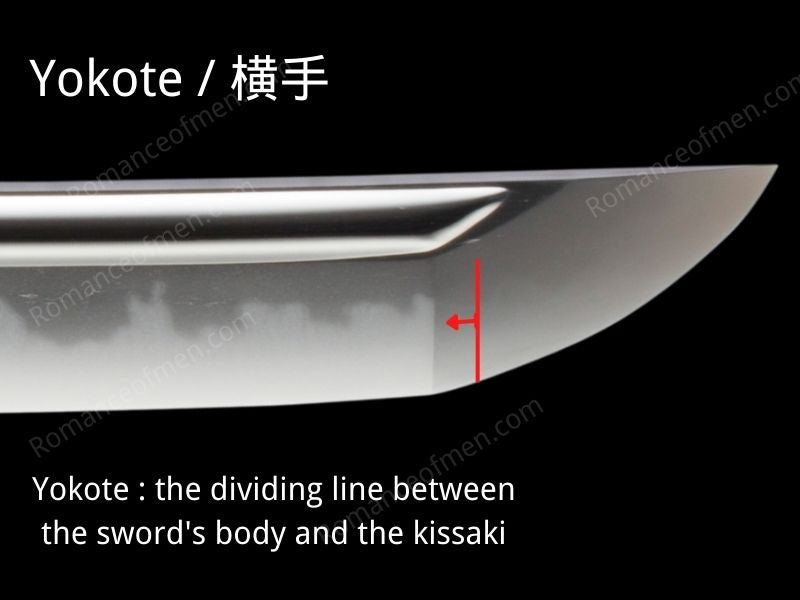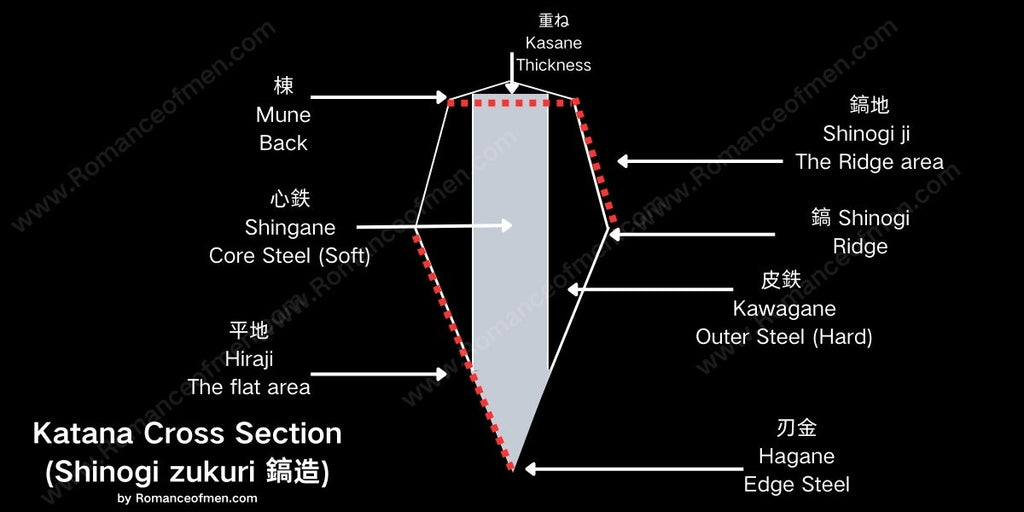Katana Yokote complete guide to understand this line near the Kissaki
Katana Yokote: A Complete Guide
The Yokote is the line that connects the body of a katana sword's blade to the tip. It serves as a visual indicator of where the blade's tip begins. However, creating a perfect geometric Yokote is a time-consuming process.
Table of Content
- What Is The Yokote 横手?
- What's The Usage Of Yokote?
- What katana has no Yokote
- Frequently Asked Questions
What Is The Yokote 横手?

The Yokote is the small line that marks the start of the blade tip (Kissaki). It acts as a line of separation between the katana blade’s body and the tip of the blade. The Yokote is the point where the tip of the blade essentially begins. It’s a signature feature of the Shinogi Zukuri katana.
Yokote, in Japanese is 横手, it literally means "a horizontal hand". It's the result when forging the Kissaki, and bring out by polishing.
Despite being a very functional piece and an aesthetic one, not all katana swords have the Yokote. For example, the Shobu Zukuri katana style, which is mainly used for cutting rather than thrusting, doesn’t have a Yokote.
Some katana Yokote might not be visible to the naked eye. But that doesn't mean there isn't one there. If you put it under a microscope, you'll see a fine line between where the tip meets the blade's body.
What's The Usage Of Yokote?
The purpose of the Yokote is both aesthetic and functional. It creates a visual separation between the blade’s Kissaki, which is the tip of the sword, and the main body.
A katana’s Yokote also helps to reinforce the tip. As a result, when the wielder thrusts the sword, it’s more stable. If you test two katanas, one with a Yokote and one without, you'll see how much of a difference it makes.
The sword with a Yokote is much more durable and helps dissipate the force generated from thrusting the sword. Therefore, the katana won't wear down as quickly and can handle more abuse.
Apart from thrusting, the Yokote also helps inflict more damage. The impact point will be larger and broader. So, a sword with a Yokote separation line meant that it could do some severe damage to samurai armor.
What katana has no Yokote
The short answer is, modern steel katana doesn't have real Yokote, and some types of katana geometry doesn't feature Yokote as well. For example, the Shobu Zukuri geometry.
How was the Yokote created in traditional katana
We used the term "real Yokote", is because we need to understand something. In authentic katana making process, Yokote was created during the forging process, not just by polishing out a line.
To understand the creation of the Yokote, it's essential to know how the Kissaki was formed. In traditional katana making process, the blade is forged using a folding and layering technique to balance toughness and strength. This image will give you better idea of the katana blade construction:

If the blade is simply cut to shape the Kissaki, the core iron Shingane (心鉄 / 心金) would be exposed, compromising the tip's strength. Therefore, the traditional way of making the Kissaki is by extending and curving the Mune part of the blade during the forging process to form the Kissaki. This ensures consistent strength between the Kissaki and the rest of the blade.
During the extension and curving process, a mark is formed due to the steel's elongation, creating the Yokote. You still need proper polishing to bring out the line, but the line is there, not by polishing out.

Modern steel doesn't require extensive folding and layering, so the sword tip isn't made the traditional way, resulting in no true yokote. The yokote on modern steel katanas is typically made by grinding.
The Painstaking Process Of Perfecting The Yokote
Not all Yokotes are the same. A high-quality Yokote with a perfect geometric line is called a geometric Yokote. These types of Yokote are very desirable and have high appeal among swordsmen.
On the other hand, some Yokotes might be of lower quality. Therefore, if you're looking for a katana with a high-quality Yokote, you should look at swords around the $1,000 mark. If you want a custom katana with real Yokote, please let us know.
Some people obsess over the Yokote and its making. It can be seen as an art—a way of showcasing a master’s skill.
Frequently Asked Questions
Do Japanese swords need the Yokote?
The need for a Yokote depends on how you intend to use the sword. For instance, if your blade is for thrusting, then a Yokote will help absorb the shock.
How do you polish katana Yokote?
A stone called the Hazuya stone is used to polish the Yokote to the desired quality. It can be a painstakingly long process.
Conclusion
The Yokote is a vital piece of the katana that gives it durability and strength. Therefore, if you're looking for a high-quality katana, check for a geometric Yokote. But swords made of highly crafted and polished Yokote will cost you more than $1,000.
Check here to learn more about each katana parts.





















